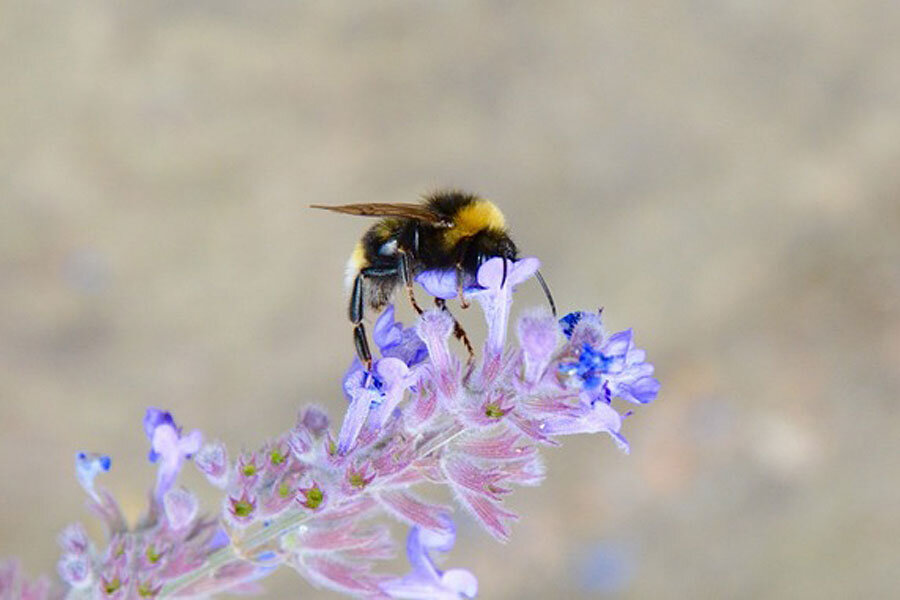Why is Earth losing its bumblebees?
Loading...
Climate change is causing wild bumblebees to disappear from large swaths of their historical range, which could spell disaster for pollinating crops in Europe and North America, new research suggests.
As global temperatures have risen, bumblebees have disappeared from the warmest regions they occupy, but have not spread northward to take advantage of new habitat, the study finds.
"They just aren't colonizing new areas to track rapid, human-caused climate change," study co-author Jeremy Kerr, a biologist at the University of Ottawa, said at a news conference. [See Images of Amazing Bumblebees]
Superstar pollinators
Honeybees have made headlines in recent years because their numbers are plummeting in a mysterious process called colony collapse disorder. Scientists have proposed a range of contributing factors, from overuse of neonicotinoid pesticides that disorient the buzzing insects to the rise of bee parasites.
But bumblebees are the real superstars of the pollinating world. Unlike almost every other bee species, bumblebees are out in the fields, sipping nectar and pollinating plants from spring to late fall, said study co-author Laurence Packer, a biologist at York University in Toronto.
Most other bee species pollinate just a handful of plants. What's more, bumblebees have unique moves, such as the ability to "buzz pollinate" tricky flowers like tomatoes, said study co-author Alana Pindar, a biologist at the University of Ottawa.
Bumblebees are of great economic importance, with studies putting their fruit and flower pollinating worth at $3 billion a year.
Sharp decline
Kerr and his colleagues looked at historical records of the habitat ranges for 67 bumblebee populations in Europe and North America between 1901 and 1974, when climate warming was negligible, and between 1974 and 2010, when climate change accelerated. On its southern edge, the bees' range has shrunk 186 miles (300 kilometers), or about 5.6 miles (9 km) every year, Kerr said.
Yet despite warming in northern latitudes, bumblebees haven't figured out a way to take advantage of the now less-frigid northern climes. The study, which was published today (July 9) in the journal Science, did not show any correlation between land-use practices or pesticide use and bumblebee populations.
Bees are dying out in the southern end of their range because of the rise of extreme heat waves.
"If you imagine a car that starts running out of coolant and starts blowing steam out of the front of the hood, that's kind of like an analogy for what bumblebees do when it gets too hot," Kerr said.
But it's not clear why they haven't flown north to make up lost ground. Many stars need to align, from just the right flowers to the right winter shelter, for queens to produce new bees for the next season; so perhaps they simply can't reproduce fast enough for new colonies to take root, said study co-author, Sheila Coila from Wildlife Preservation Canada.
Saving bumblebees
However, not all bumblebees are in peril. About 25 to 30 percent are doing well, and studying these hardy, weedlike species such as Europe's buff-tailed bumblebee (dubbed the "dandelion of the bumblebee world") could reveal clues to help scientists save other species, Kerr said.
Conservationists may have to employ assisted migration and relocate colonies en masse as well as preserve wild havens that provide a feast for pollinators. Managing other threats, such as pesticides, could also make them less vulnerable to heat stress, Kerr said.
Gardeners can also take steps to help the little fliers thrive. Simple, native wildflowers are often better for bumblebees than showier blooms, Packer said.
A traditional rose, for instance, is "like a Christmas present when you've got to get through, you know, 50 different layers of cardboard box and wrapping to get to what's inside."
By contrast, the wild rose of Alberta is perfect, he said. "It's a plate of food for bees that just says, 'Come get me.'" Packer said.
Follow Tia Ghose on Twitter and Google+. Follow Live Science @livescience, Facebook & Google+. Original article on Live Science.
- No Creepy Crawlies Here: Gallery of the Cutest Bugs
- 6 Unexpected Effects of Climate Change
- Gallery: Dazzling Photos of Dew-Covered Insects
Copyright 2015 LiveScience, a Purch company. All rights reserved. This material may not be published, broadcast, rewritten or redistributed.







